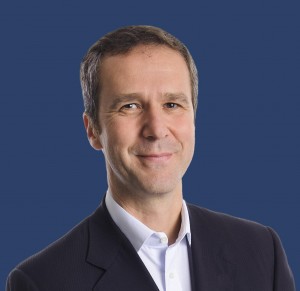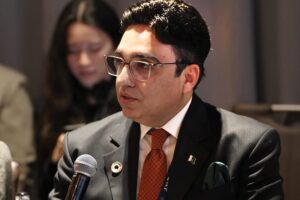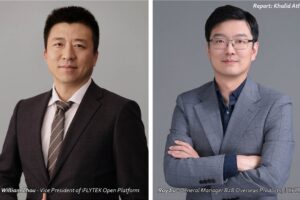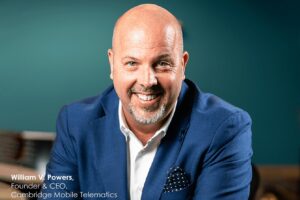
Andres Lindblad
(President and CEO, Ericsson ME, NEA)
Shares his insights on 4G and other trends in mobile sector
in the region with Teletimes
Interview: Khalid Athar
Teletimes – Please tell us about your position at Middle East Region.
Andres Lindblad – When Ericsson’s new regional structure was announced in February 2010, I was named Head of Region, Middle East and North-East Africa, which makes me responsible for Ericsson’s operations in 22 countries. Ericsson has been present in the Middle East for over 120 years and I truly believe that we’ve played a key role in growing and developing the telecommunications market in the region together with the operators which we work closely with.
TT – What are the recent trends in mobile infrastructure and services at your region?
AL – We are seeing a definite convergence of media and telecommunications driven largely by a strong demand for devices like smartphones, tablet computers and laptops. All indications point to further growth in demand and our belief is that we will have as many as 50 billion connections by 2020. We believe that in the future everything that will benefit from being connected, will be connected. This definitely presents an opportunity for 4G in 2011 and beyond and as the global leaders in the field we will look at ways to make the most of this demand. So, we expect a transition to 4G to become a reality soon and Ericsson as key driver of this technology and as a key driver of faster throughput, will help make this a reality.
Some global research that we have conducted recently shows some interesting findings around mobile infrastructure in general and mobile broadband specifically:
• Mobile data traffic will grow 10-fold between 2011 and 2016, mainly driven by video.
• Mobile broadband subscriptions grew by 60 percent in one year and are expected to grow from 900 million in 2011 to almost 5 billion in 2016.
• By 2016, users living on less than 1 percent of the Earth’s total land area are set to generate around 60 percent of mobile traffic.
TT – How do you foresee the region in terms of 3G and LTE mobile networks deployment?
AL – Each country features its own peculiarities and inherent challenges; as a result it is difficult to generalize and think of each of these countries as one region, as some countries are more prepared for 3G and LTE than others. However, it is clear that there is a tremendous amount of growth taking place and while some countries may be quicker in their adoption of these new technologies, inevitably we expect all operators across the region to adopt the technology as demand for true connectivity and hyper-mobility continues to grow.
TT – What are the barriers in your view with regards to mobile broadband adoption in the region?
AL – Smartphones have been held back to an extent by the limitations of the cellular networks; current systems in place, while much faster than the older technology that was available, are still slow in comparison with even relatively inexpensive home broadband options such as cable, and lag far behind fiber optic technologies. In an age where people consider constant connectivity a necessity, 4G is an inevitable next step as it will allow users to communicate more effectively and efficiently.
TT – How does Ericsson is planning for the network convergence trends in the Middle East region?
AL – Given where our customers (the operators) are heading and their strategy to go there we will take different approaches. In short we try to support them in three areas:
1. Become more operationally efficient.
2. Evolve networks to meet current and future needs.
3. Improve net subscriber revenue.
TT – In your opinion, what is the importance of next decade in the mobile sector of the Middle East region?
AL – The region shows much promise in the mobile sector and you’ll find that this is one of the most stable sectors. We expect demand for connectivity to continue to grow at a rate that will push all operators across the region to adopt newer, more efficient technology such as 4G. while some operators have already started rolling this technology out, each country has its own particularities and while we expect that most if not all countries in the region will launch the technology in the near future, it is important to remember that each county, with its own challenges and considerations will have to work at a different pace to provide its consumers with the connectivity they seek.
TT – What is the Ericsson position when mobile is meeting the Internet?
AL – We see three forces that are rapidly shaping the fundamental digital infrastructure in our world where we as a technology and service provider can contribute>
• Mobility. People and businesses want to be able to accomplish all of their tasks no matter where they are. It’s no longer a question of when to get ON-line, it’s when you go OFF-line. (Just ask my family about that one.)
• Broadband. Faster and better quality broadband enables new btusiness processes, new value networks and new ways for machines to communicate with one another — all to improve accessibility of goods and services; and
• The cloud, where applications are more accessible, where the entry point is lower thanks to lower costs, and where cheaper, more powerful devices can run these applications.
These three forces together open up a new interaction logic within the networks — built on presence, identity, location, preferences, etc. — that in turn enables new activities in society that are transformed by ICT (healthcare, transport, utilities, media and so on).
The sum of these changes and developments is a Networked Society, where everything that benefits from a connection will have one, and where people are using ICT when they are interacting, learning, innovating and socializing.
Our vision for a Networked Society is where people, knowledge, devices and information are networked for the growth of society, life and business — a society where people are empowered, businesses are strengthened and societies are vitalized.
TT – 50 billion connected devices by 2020, what are your thoughts for the Middle East region in mapping the Ericsson’s prediction?
AL – Ericsson has a vision of more than 50 billion connected devices by 2020, and Ericsson mobile broadband modules will play an important part in connecting every segment of our society. Ericsson ConsumerLab research shows that, regardless of the device they use, many people are discovering how difficult life is when they are not continuously connected. Internet everywhere is becoming a prerequisite for consumers as well as professional users. Devices will therefore be required to work in increasingly varied environments and situations, and Ericsson can help ensure those experiences are of the highest quality.
In brief, we strive to work hand in hand with our customers to add value to their business while introducing initiatives to provide optimum benefits to end-users. Considering that we talk about 50 billion connected devices around the world, this region is corresponding to 10{e1f18614b95d3cd6e4b3128e1cd15d99b042a60a5a19c19b7a8e07e7495efa10} of that (5 billion connected devices). In the Middle East, there will be very affordable chipsets that will be able to fit into devices such as cameras and readers. It is a very good investment for governments, and can stimulate the GDP.
TT – Ericsson has introduced a specific ‘Technology for Good’ program. Are there any examples of this program from your region?
AL – As part of its ongoing corporate social responsibility (CSR) program, Ericsson, has a number of initiatives across the Middle East that support the communities that the company operates in. A recent example of this is Ericsson Egypt’s efforts in developing an in-house charity organization that supports underprivileged communities in Egypt as well as communities around the globe that are in dire need of assistance such as the people of Somalia who are suffering from the hunger crises. Ericsson takes its responsibility towards the community very seriously and is constantly looking at ways to contribute.
CAPEX and RIO remains the top concern for the carriers while they move along to network expansion and scalability. How Ericsson does assist them?
The main focus for us is of course to help operators become more competitive in three main ways:
1. Become more operationally efficient.
2. Evolve networks to meet current and future needs.
3. Improve net subscriber revenue.
Being a global market leader we also have an opportunity to share our knowledge from other parts of the world. Being present all over the world gives us unique insights and experience what works well and less well. This we try to leverage in the Middle East. Being a local leader with global presence is a key differentiator for us.










